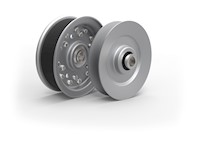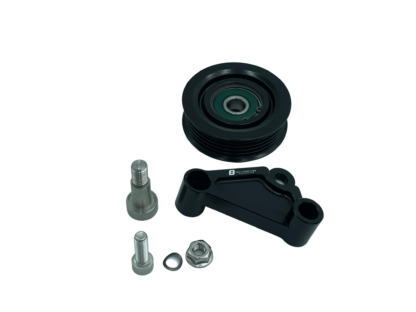Product Description
Product Description
Manufacturer Wholesale Price Belt Conveyor Idler Roller – Drive Pulley / Pulley
Product Application
GCS conveyor pully is manufactured as per customer requirement, with main design under national standard, quality inspection focusing on shaft core, welded joint, rubber material and hardness, dynamic balance and so on for longer product lifetime.
Our products are widely used in thermal power generation, harbours, cement plants, metallurgy and as well as the light duty conveying devices for industries.
|
SPECIFICATIONS |
|||
|
Product name |
belt conveyor pulley drum |
||
|
Type |
Transmission drum, Redirection drum, Driving Electric drum |
||
|
Length |
200mm-1800mm |
||
|
Materials |
Carbon steel, Stainless steel, Rubber |
||
|
Surface treatment |
Smooth, CHINAMFG grooved lagging, Herringbone lagging, Ceramic lagging |
||
|
Welding |
Submerged arc welding |
||
|
Bearing |
SKF, CHINAMFG and other brands at home and abroad |
||
|
Structure |
Tube,shaft,self-aligning bearing,bearing seat/house,hub, locking bushing,end disc |
||
Main Features
1) CHINAMFG design, suitable for heavy lifting.
2) The bearing housing and steel tube are assembled and welded with a concentric automatic.
3) Cutting of the steel tube and bearing is performed with the use of a digital auto device/machine/equipment..
4) The bearing end is constructed to ensure that the roller shaft and bearing can be firmly connected.
5) Fabrication of the roller is effected by an auto device and 100% tested for its concentricity.
6) Roller and supporting components/materials are manufactured to DIN/ AFNOR/ FEM/ ASTM/ CEMA standard.
7) The casing is manufactured with highly composite, anti corrosive alloy.
8) The roller is lubricated and free from maintenance.
9) Woring life expectancy is up to 30,000 hours or more, depending on usage.
10)Vacuum sealed which has withstood anti water, salt, snuff, sandstone and dust proof experiments
Related Products
Testing Machines
Certifications
Our Service
Professonal & Passion Sales team 24 hours at your service
· Participating in the various exhibitions help you to know us more completely
· Sample could be sent in 3-5days
· OEM of customized products / logo / brand / packing is accepted
· Small qty accepted & quick delivery
· Our own Product Development Team will regularly update new products.
· Product diversification for your choice
· Factory sale directly with professional sale team
· For Best price High quality and favorable service
· Express service for some urgent delivery orders to meet customer request
Our Company
Global Conveyor Supplies Co., Ltd.
Established in 1995; Land area = 20,000 m2; Staff= 120 persons.
Located in HangZhou, ZheJiang Province, next to HangZhou city.
GCS, RKM is a registered trademark in China.
GCS enjoys a renowned reputation and our products are marketed globally in South-East Asia, Middle East, Africa, Australia, Europe, Hong Kong and many other countries.
| Material: | Stainless Steel |
|---|---|
| Surface Treatment: | Baking Paint |
| Motor Type: | Frequency Control Motor |
| Installation: | Horizontal |
| Color: | Customized |
| Certification: | ISO9001:2015 |
| Samples: |
US$ 500/Piece
1 Piece(Min.Order) | |
|---|
| Customization: |
Available
| Customized Request |
|---|
What safety considerations should be kept in mind when working with idler pulleys?
Working with idler pulleys requires adherence to proper safety practices to prevent accidents and injuries. Here are some important safety considerations to keep in mind:
1. Lockout/Tagout Procedures:
Prior to any maintenance or repair work involving idler pulleys, follow lockout/tagout procedures to isolate the power source and ensure the equipment is de-energized. This prevents unexpected startup and potential entanglement hazards.
2. Personal Protective Equipment (PPE):
Wear appropriate personal protective equipment, such as safety glasses, gloves, and protective clothing, when working with idler pulleys. PPE helps protect against potential hazards such as flying debris, sharp edges, or accidental contact with rotating parts.
3. Training and Knowledge:
Ensure that personnel working with idler pulleys are trained and knowledgeable about the equipment and its safe operation. They should understand proper installation, maintenance, and adjustment procedures to minimize risks.
4. Equipment Inspection:
Regularly inspect idler pulleys for signs of wear, damage, or misalignment. Replace any worn or damaged pulleys promptly to ensure safe operation and prevent unexpected failures.
5. Proper Guarding:
Ensure that idler pulleys are properly guarded to prevent accidental contact. Install adequate barriers, covers, or shields to prevent fingers, clothing, or other objects from coming into contact with rotating pulleys.
6. Safe Work Practices:
Follow safe work practices when working with idler pulleys. Avoid wearing loose clothing or jewelry that could get caught in the pulleys. Use appropriate tools and techniques when installing or adjusting belts to minimize the risk of injury.
7. Risk Assessment:
Conduct a thorough risk assessment of the work area and the specific tasks involving idler pulleys. Identify potential hazards, such as pinch points, sharp edges, or inadequate lighting, and take appropriate measures to mitigate the risks.
8. Emergency Procedures:
Establish clear emergency procedures in the event of an accident or injury. Ensure that personnel know how to respond to incidents, provide first aid if necessary, and contact medical assistance.
It is important to note that the above safety considerations are general guidelines. Always refer to the specific safety guidelines and recommendations provided by the equipment manufacturer and follow any applicable regulations and standards in your region to ensure the highest level of safety when working with idler pulleys.
Are there different types of idler pulleys, and how do they vary in applications?
Yes, there are different types of idler pulleys that vary in design and application. Here’s a detailed explanation of the various types of idler pulleys and how they differ in their applications:
1. Flat Belt Idler Pulleys:
Flat belt idler pulleys have a flat surface and are commonly used in applications where flat belts are used for power transmission. They are typically used in industrial machinery, conveyor systems, and agricultural equipment. Flat belt idler pulleys come in various diameters and are designed to guide and support the flat belt, ensuring proper tension and alignment.
2. V-Belt Idler Pulleys:
V-belt idler pulleys are designed specifically for V-belt drives, which are widely used in automotive and industrial applications. These pulleys have a V-shaped groove that matches the cross-section of the V-belts, ensuring proper engagement and power transmission. V-belt idler pulleys are used in automotive engines, HVAC systems, and various industrial machinery.
3. Timing Belt Idler Pulleys:
Timing belt idler pulleys are used in applications where timing belts are employed for synchronous power transmission. These pulleys have specially designed teeth or grooves that mate with the teeth on the timing belt, allowing precise motion control and synchronization. Timing belt idler pulleys are commonly found in automotive engines, CNC machines, robotics, and other precision machinery.
4. Chain Idler Pulleys:
Chain idler pulleys are used in systems that utilize chains for power transmission. These pulleys have grooves or teeth that match the profile of the chain, providing proper engagement and tension. Chain idler pulleys are commonly employed in bicycles, motorcycles, industrial machinery, and conveyor systems using roller chains or timing chains.
5. Tensioner Pulleys:
Tensioner pulleys are a specialized type of idler pulleys designed specifically for maintaining proper tension in automotive accessory drive systems. They are often used in conjunction with serpentine belts or multi-ribbed belts. Tensioner pulleys incorporate a spring-loaded mechanism that automatically adjusts the tension of the belt. These pulleys are critical for reliable operation and proper belt tension in automotive engines.
6. Specialty Idler Pulleys:
In addition to the commonly used idler pulleys mentioned above, there are various specialty idler pulleys designed for specific applications. These may include idler pulleys with unique shapes, sizes, or specialized features to meet the requirements of specific industries or equipment. Specialty idler pulleys can be found in applications such as printing presses, textile machinery, packaging equipment, and more.
The choice of idler pulley type depends on the specific application requirements, such as the type of belt or chain used, power transmission needs, space constraints, and environmental factors. Proper selection of the appropriate idler pulley ensures optimal performance, reliable power transmission, and extended system lifespan.
Can you explain the primary functions and components of an idler pulley?
An idler pulley serves important functions in mechanical systems and consists of several key components. Let’s explore the primary functions and components of an idler pulley:
1. Primary Functions:
– Belt Guidance: The main function of an idler pulley is to guide the belt along a desired path, changing its direction as necessary. This ensures efficient power transmission and proper operation of the system.
– Tension Maintenance: Idler pulleys help maintain tension in the belt by taking up slack and preventing belt sagging or slippage. Proper tension is essential for optimal power transfer and system performance.
2. Components:
– Pulley Wheel: The pulley wheel is the circular component with a groove or V-shape that accepts the belt. It rotates on a fixed axle or bearing and provides a contact point for the belt to ride on.
– Axle or Bearing: The axle or bearing is the component that allows the pulley wheel to rotate smoothly. It provides support and reduces friction, ensuring efficient movement of the belt.
– Mounting Bracket: The mounting bracket is used to secure the idler pulley in its designated position within the system. It may be attached to a stationary structure or integrated into a movable mechanism.
– Tensioning Mechanism (Optional): In some cases, idler pulleys may incorporate a tensioning mechanism. This can include a spring-loaded arm or an adjustable bracket that allows for easy adjustment of belt tension.
– Housing or Guard (Optional): Depending on the application, an idler pulley may be enclosed within a housing or guarded to protect it from external elements and to prevent accidental contact with moving parts.
It’s important to select an idler pulley that is compatible with the specific belt type, system requirements, and load conditions. Proper installation and periodic maintenance, such as lubrication of bearings and inspection for wear, are essential to ensure smooth operation and extend the lifespan of the idler pulley.
editor by CX
2023-12-11




